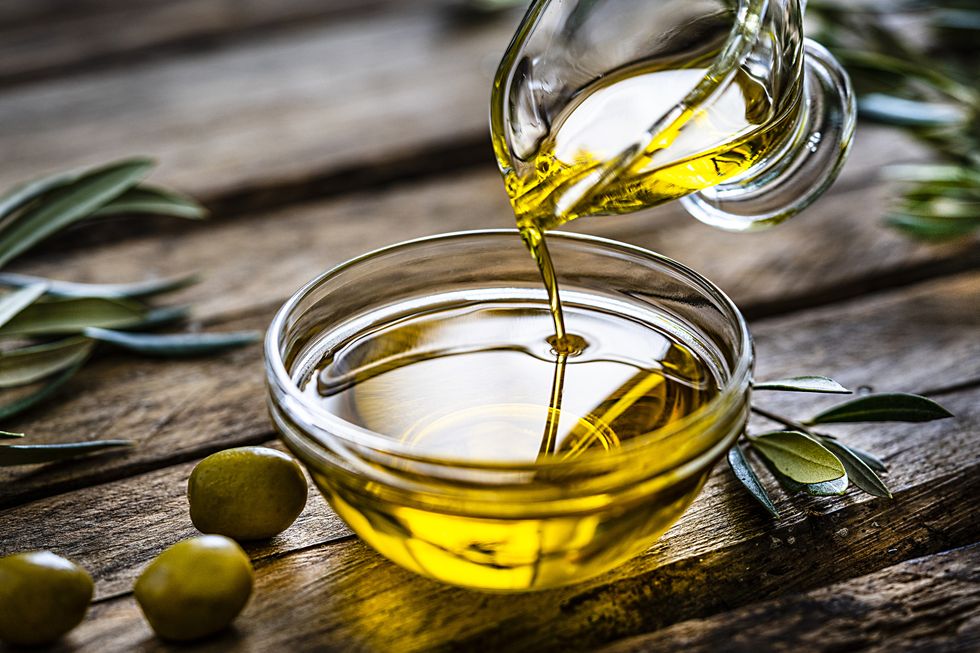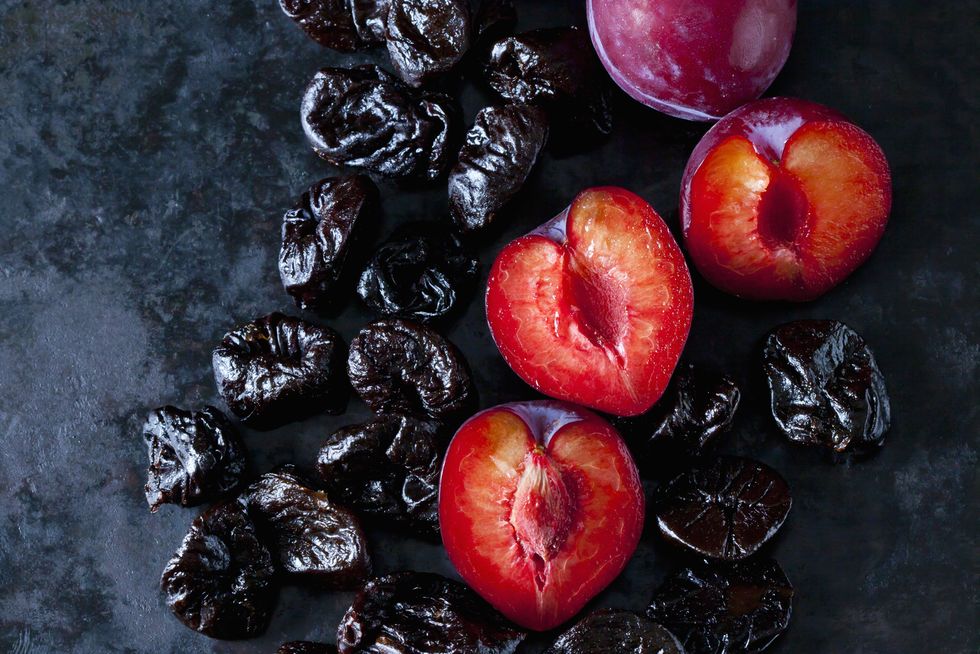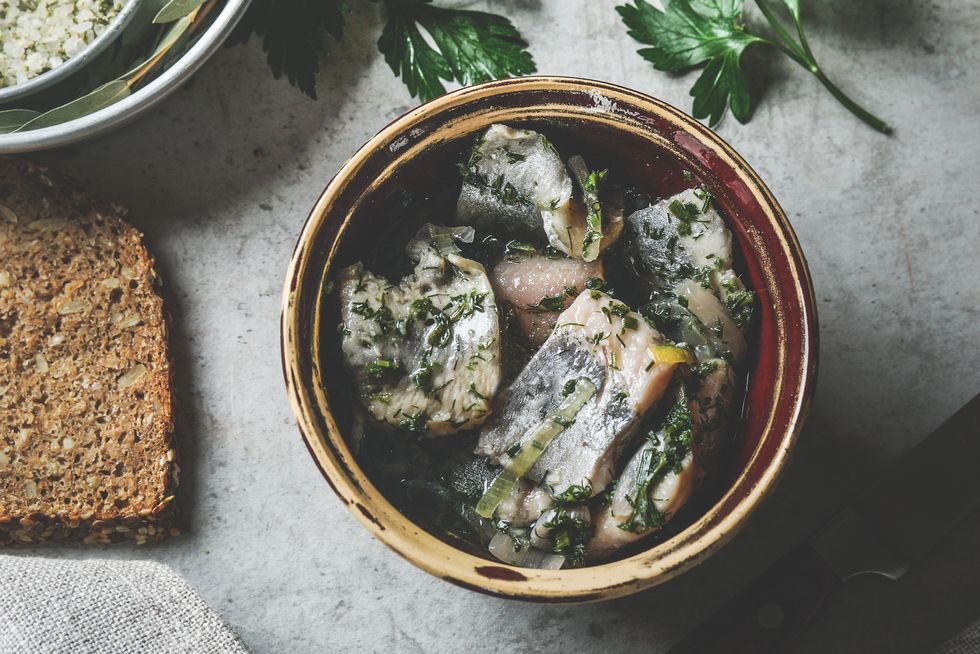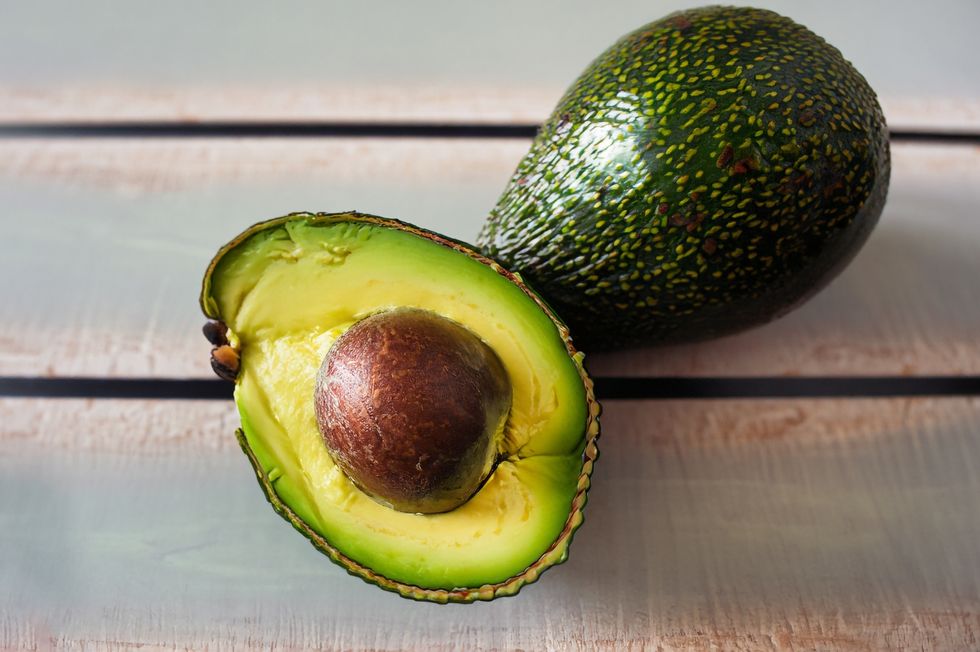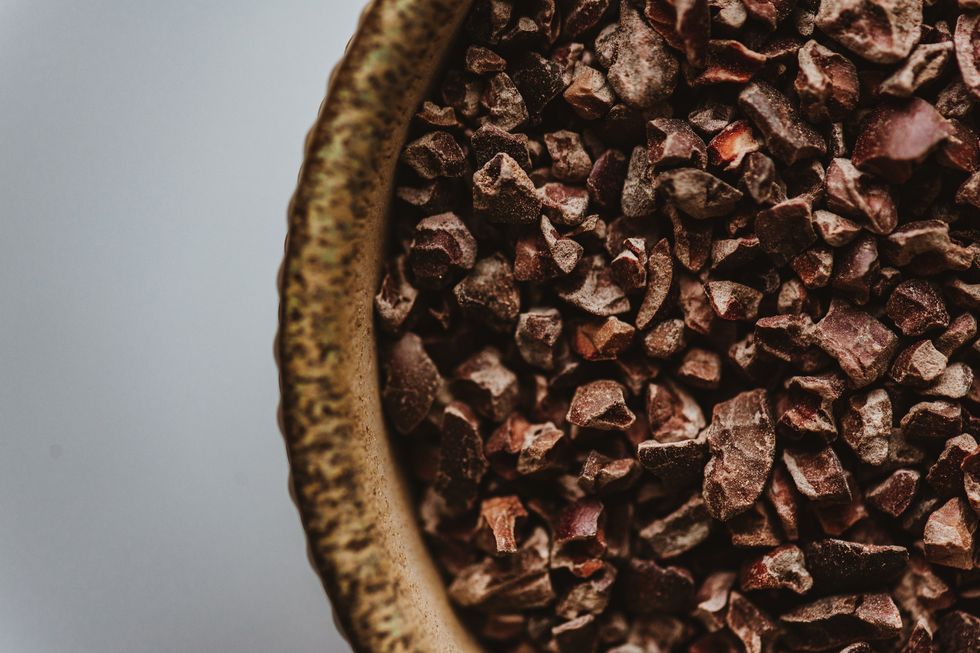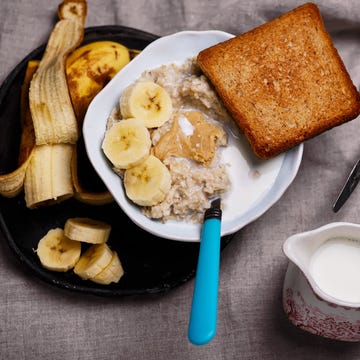If you have ever glanced at the nutrition label on, say, a jar of peanut butter, then you will know that some foods are surprisingly high in calories, even in small quantities. However, while we’ve often traditionally been told to avoid or reduce our intake of high-calorie foods, incorporating energy-dense foods into your diet isn’t always a bad thing – particularly if you're a runner.
We know that correctly fuelling is so important when it comes to sport and exercise. Failing to do so can put runners at risk of fatigue, injury and longer-term issues like RED-S (Relative Energy Deficiency in Sport). In a new study published in the International Journal of Exercise Science, researchers investigated trail runners’ fuelling habits and their risk of Low Energy Availability (LEA). Out of 1,899 runners, almost half (47.6%) of athletes reported taking in less than the recommended carbohydrate guidelines during endurance events lasting more than 2.5 hours.
Coupled with outdated cultural norms about diet – which often demonise sugar – there still appears to be a knowledge gap about fuelling longer-distance runs. That’s one of the reasons it’s so important for runners to educate themselves about nutrition and find what works for them – and part of this involves getting to know the best energy-dense foods.
What everyone's reading
Energy density is a concept referring to the amount of energy, or calories, per weight of food. At one end of the spectrum is something like celery, which contains just 14 calories in 100g. At the opposite end would be something like a croissant, which has about 406 calories in a 100g serving.
While it is sensible to limit your intake of ultra-processed energy-dense foods, like fried foods, chips and buttery pastries, it's worth noting that not all energy-dense foods are problematic. Many healthy, whole foods can be both energy-dense and nutrient-dense.
'When training volume is high, energy needs are as well,' says Emily Edison, owner of Momentum Nutrition. 'Our stomachs can only handle so much volume of food at one time, so energy-dense foods allow us to meet the energy demands of sport without overfilling our stomachs, which can cause discomfort.'
What's more, those additional calories can help runners who struggle to get strong to build lean body mass, which supports running performance.
The best energy-dense foods
Unsure which energy-dense foods to toss into your shopping trolley? The following options are all healthy items to incorporate into your meals and snacks – enjoy them and remember to eat mindfully.
1. Extra virgin olive oil
Liquid fats, like extra virgin olive oil, are the most energy-dense foods around, with each gram of fat supplying nine calories. But, this staple of the much-researched Mediterranean diet is proof that some fatty items do the body good.
A new systematic review (a type of study analysing data from lots of other studies) published in the journal Nutrients explored the impact of the Mediterranean diet on athletic performance, muscle strength, body composition and antioxidant markers. Researchers found that the Mediterranean diet was associated with enhanced strength performance, including increased vertical jump height, hand grip strength and shuttle run performance. They also identified positive effects of the diet on several markers, such as increased plasma total antioxidant activity and decreased markers of oxidative stress and inflammation.
Another study published in the Journal of the American College of Cardiology found that adding half a tablespoon or more of extra virgin olive oil to your diet could lower your risk of death from heart disease and cancer by 19% and 17% respectively. Extra virgin olive oil was also associated with a 29% lower mortality risk from neurodegenerative disorders, such as Alzheimer’s disease and Parkinson’s disease. What's more, replacing about 10g a day (about 3/4 tbsp) of butter, margarine, mayonnaise or dairy fat with the equivalent amount of olive oil was associated with a lower risk of early death by up to 34%.
According to the findings of a separate report, eating a moderate amount of extra virgin olive oil can reduce inflammation, your blood pressure and your risk of developing certain cancers.
'Polyphenols in olive oil have been associated with reducing morbidity, which is related to their antioxidant and anti-inflammatory properties,' says Edison. 'These properties can also help to enhance healing from sport and minimise the damaging effects of free radicals released during intense training.' Edison also points out that the monounsaturated fats in extra virgin olive oil can contribute to a reduction in LDL ('bad') cholesterol when it is used to replace other fats in the diet.
The fat pressed from olives is also source of vitamin E, too, which acts as an antioxidant to protect our cells from the harmful effects of circulating free radicals. This is another way that extra virgin olive oil may help athletes to recover more effectively from their training.
While extra virgin olive oil is not the only type of olive oil you can get your hands on, Edison says that it is the highest quality and healthiest grade. 'It is not treated with heat or chemicals, thus maintaining the phenol and nutrient content.'
However, more refined varieties of olive oil that are 'pure' or 'light' are better suited to cooking at a higher heat and still contain a good amount of heart-healthy monounsaturated fat. So, make extra virgin olive oil the backbone of your salad dressings and use it when roasting vegetables and sautéing foods.
2. Dried plums
Dried fruits like prunes are fresh fruits (in this case, plums) that have had nearly all of their water content removed through various drying methods. By weight, they are more calorie-dense than fresh fruit options – but that means they are also a denser source of important nutrients. These include fibre, B vitamins, potassium and large amounts vitamin K, which is beneficial for the heart.
In fact, a recent study in the Journal of the American Heart Association found that people who ate more foods that are high in vitamin K had a lower risk for cardiovascular diseases related to atherosclerosis (which is where your arteries become narrowed, making it difficult for blood to flow through them), compared with those who ate fewer vitamin K-rich foods.
If you find it difficult to eat enough fresh fruits during the day, turning to shelf-stable and convenient dried fruits can be a way to fill some nutritional gaps – and, when eaten before and during long workouts, as a way to keep your energy levels in check 'Dried fruit is a convenient, portable snack for athletes to assist in fuelling performance on the go, and to get in some extra high-antioxidant fruit servings,' says Edison. 'But the concentrated fruit sugar in dried fruit can cause an upset stomach in some people, so, as always, try your fuelling strategy during training before using it in a race or competition.'
Since dried plums are dense in carbohydrates, Edison says that they can be a great option for runners who want to restock their energy stores after a long workout, too. 'Just be sure that you don’t forget to drink plenty of water with them.'
Research also suggests that dried plums can help to prevent or delay bone loss as we age, possibly because they contain nutrients and antioxidants that assist in reducing inflammation and oxidative stress, which can contribute to bone weakening.
And, finally, eating dried plums can lead to better bathroom visits – research shows that the fibre contained within the parched fruit increases stool frequency and consistency.
3. Pickled herring
This Scandinavian favourite contains more calories than popular fish options like salmon, tuna and tilapia. But, those are extra calories that your heart will be happy about, since herring is very high in calories from omega-3 fatty acids.
A study in the American Journal of Clinical Nutrition that monitored 2,200 people over eleven years found that that those who had higher levels of omega-3 fatty acids in their blood – derived from foods such as herring – had increased their life expectancy by almost five years. Recent evidence also shows that these mega-healthy fats can make our red blood cells more uniform in size, which allows them to move around our bodies while carrying oxygen more easily.
In addition, herring is one of the few reliable food sources of vitamin D for better bone health. It appears that vitamin D can help to improve metrics of immune function and muscle function, too, making it a good food to eat if you want to improve your running performance. Herring also provides plenty of vitamin B12 – which, as Edison says, is 'a vital nutrient for energy metabolism and to help runners feel more energetic' – and high-quality protein to support muscle growth and maintenance.
Chunks of pickled herring (which are more delicious than you think if you are a fish fan!) don't need to be cooked and can be worked into sandwiches as a healthy upgrade to deli meat. Or, toss them onto salads for a nutritional punch.
4. Macadamia nuts
Belonging to a food group that is never accused of being stingy in calories, macadamia nuts are the leaders of the pack.
But, it’s important to look past their lofty calorie count – almost 80% of the fat contained within these buttery nuts is of the monounsaturated kind. This is likely why eating more macadamia nuts appears to assist in bringing down cholesterol levels, which could translate to better heart health in the longer term.
Tree nuts like macadamias are also rich in dietary fibre and polyphenols, the latter of which have antioxidant and anti-inflammatory functions in the body. They additionally include significant amounts of manganese and thiamine – two nutrients that are necessary for various metabolic processes.
An easy way to add macadamia nuts to your diet is to toss them into things like smoothies, porridge and trail mix. Like other nuts, these delicious morsels can serve as a great energy source for runners when the daily schedule has you on the go.
5. Avocado
Compared to other whole fruits, avocados are significantly more calorie-dense – that’s because their creamy flesh is rich in fat.
Keep in mind that the majority of this fat is monounsaturated fat, which is less troublesome for your heart health than the saturated fat you would find in some energy-dense meats, coconut oil and ultra-processed foods.
Science suggests that including nutrient-dense fats such as avocados in meals can increase feelings of satiety, which may cause you to consume fewer calories later in the day. That's because, beyond the fat, avocados contain high amounts of filling fibre, which can additionally improve how well your microbiome – which is the mix of bacteria in your gut – is functioning.
Research also shows that people who regularly enjoy nutrient-dense avocado tend to have higher levels of vital nutrients including vitamin E, vitamin K, potassium and magnesium.
6. Cacao nibs
It should come as no surprise that these bitter-sweet crunchy nuggets contain a few fair calories – but they offer a fair few nutritional benefits, too.
Cacao nibs are made when roasted whole cacao beans – which are the same beans used to make chocolate bars – are smashed into small pieces. So, you can think of them as a less-processed form of chocolate, which are also minus the added sugars. That leaves you with a more concentrated source of cacao-derived antioxidants, including flavonoids, that have been linked with a lower risk of heart disease and improved brain function.
'Intense exercise triggers the release of free radicals, causing acute inflammation in the body,' explains Edison. 'Athletes can use antioxidant foods like cacao nibs to provide some protection against these free radicals.'
As well as supplying a payload of antioxidants, three tablespoons worth of cacao nibs also provide an impressive 9g of dietary fibre. A recent investigation in the American Journal of Clinical Nutrition found that as the intake of fibre goes up, the risk of premature death from conditions like heart and respiratory disease drops.
What's more, cacao nibs are a source of several key minerals including iron, magnesium, copper and manganese, further upping the health ante.
You can mix cacao nibs into your porridge, yoghurt and smoothies, and they're great in homemade energy bars and balls, too. Or, you could try grinding them with coffee beans to add a chocolatey taste to your morning brew.
Other manageable and affordable ways to incorporate energy-dense foods into your diet as a runner
Rachel Aceso Dip.NT is a certified nutritionist and founder of Nature Provides. She explains: ‘Runners burn through energy fast, so the right fuel is essential for endurance and recovery. Without it, fatigue, slow recovery, and even injury risk increase. The key is finding foods that provide lasting energy without causing sluggishness or digestive discomfort.’
Part of this, she says, involves experimenting and listening to your body – and recognising that what works for one runner might not work for another. ‘Keep it simple – nuts, oats, bananas with nut butter, or full-fat Greek yoghurt are great options. Homemade energy balls with dates, nuts, coconut cream and cocoa are easy and cost-effective. Even a little dark chocolate (which is 70%+ cocoa) can give you a quick boost,’ Aceso advises.
Dark chocolate contains theobromine, a natural stimulant which, in small amounts, has been suggested to have several benefits, including helping to reduce inflammation and alleviate oxidative stress. However, it remains largely under-researched and has not been studied as extensively as caffeine.
Aceso adds that full-fat dairy and honey can also be a good source of energy and nutrients for runners. But, as with all things diet-related, balance and moderation are crucial. Variation is also key, and foods like lentils, tofu, beans, porridge, fruit and vegetables are all good nutrient-rich options for runners.
Dr. Namrita Brooke is a full-time endurance sport coach and sport nutritionist advising active individuals and amateurs to professional athletes. She is also an adjunct professor in the Department of Movement Sciences and Health at University of West Florida. Professionally, she also serves on the Board of Editors of the Sports Nutrition Care Manual and remains involved in nutrition and exercise-related research, student mentorship, and coach development. Namrita's personal athletic experience ranges from ultra-endurance mountain biking to off-road triathlon, cross-country mountain bike racing, gravel cycling, duathlon, cyclocross, running, and trail running. Her research background includes hydration and sports drink research, and the interaction of nutrition, physical activity, and the brain.

